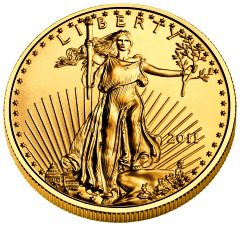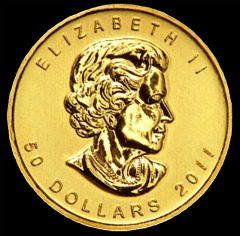As with most things in life, making an investment in silver or gold is not without risk….What do you suppose is the biggest risk we face [and how should we go about protecting our holdings? Read on because you will be surprised!] Words: 1885
is the biggest risk we face [and how should we go about protecting our holdings? Read on because you will be surprised!] Words: 1885
So says Jeff Clark (www.CaseyResearch.com) in edited excerpts from an article* which Lorimer Wilson, editor of www.munKNEE.com (Your Key to Making Money!), has further edited ([ ]), abridged (…) and reformatted (some sub-titles and bold/italics emphases) below for the sake of clarity and brevity to ensure a fast and easy read. The author’s views and conclusions are unaltered and no personal comments have been included to maintain the integrity of the original article. Please note that this paragraph must be included in any article re-posting to avoid copyright infringement.
Who in the world is currently reading this article along with you? Click here
Clark goes on to answer the question and explain why it is the case, as follows:
“Your biggest risk is not that gold or silver may fall in price. Nor is it that gold stocks could take longer to catch fire than we think. Not even the prospect of the Greater Depression. No, your biggest risk is political. As bankrupt governments get increasingly desperate for revenue, any monetary asset held domestically could be a target. It is absolutely essential that every investor diversify themselves politically. In fact, at this point, it is the one action that should be taken before anything else.” – Doug Casey, September 2011
I know many reading this are prudent investors. You own gold and silver as solid protection against currency debasement, inflation, and faltering economies. You set aside cash for emergencies. You have strong exposure to gold stocks, both producers and juniors, positioned ahead of what is likely the next-favored asset class. You feel protected and poised to profit. Yet, despite all this preparation, you remain exposed to one of the biggest risks.
Lack of Sufficient Diversification
Similar to holding a diversified portfolio at a bank without checking the institution’s solvency, many investors keep their entire stash of precious metals inside one political system [that is, country] without considering the potential trap they’ve set for themselves. While storing some of your gold outside your home country is not a panacea, it does offer one important thing: another layer of protection.
Consider the exposure of the typical American investor:
- systemic risk, because both the bank and broker are US domiciled;
- currency risk, as virtually every transaction is made in US Dollars;
- political risk, because they are left totally exposed to the whims of a single government; and,
- economic risk, by being vulnerable to the breakdown of a single economy.
Viewed in this context, the average American investor has minimal diversification.
Internationalize the Storage of Some of Your Precious Metals
This act reduces four primary risks:
1. Confiscation: We don’t know the likelihood of another gold confiscation but we do know that things are working against us – particularly for US citizens. With $14.7 trillion of debt and $115 trillion of unfunded liabilities, the U.S. government will likely pursue heavy-handed solutions. Under the 1933 FDR “gold confiscation” in the US (the executive order was actually a forced delivery of citizens’ Gold in exchange for cash), foreign-held gold was exempted. [Read this article (1), this article (2) and this (3) article on confiscation.]
2. Capital Controls: Many Casey editors think some form of capital controls lie ahead, limiting or eliminating a citizen’s ability to carry or send money abroad. If enacted, all your capital would be trapped inside the U.S. and at the mercy of whatever taxing and regulating schemes the government might concoct. Although you might be able to leave the country, your assets could not travel with you.
3. Administrative Action: There are plenty of horror stories of asset seizure by a government agency without any notice or due process, possibly leaving the victim without the means to mount a legal defense. Having some gold or silver stored elsewhere provides what could be your only available source of funds in such a scenario.
4. Lack of Personal Control: Having gold and silver stored elsewhere adds to your options. You will have a source of funds available for business, entrepreneurial pursuits, investment, or pleasure.
Foreign-held assets require…[considerable] awareness and planning [as] access to your metal or sale proceeds may not be quick. Therefore, this option is for those with some gold and silver stored at or near home. We do not recommend storing all your precious metals…[outside the country as] that defeats one of its purposes, to have it handy for an emergency. While we think the U.S. poses the greatest threat, a foreign government could move to control certain assets as well. The risk varies by country and is generally greater within the banking system than with private vaulting facilities. [In addition,] understanding and complying with reporting requirements is essential.
Notice above we said these risks can be reduced, not eliminated. There is no perfect solution; Americans could, for example, be compelled to pay a “wealth tax” [read this article (4) on the potential of your IRA or 401(k) being heavily taxed/confiscated to alleviate America’s dire debt situation] on assets held worldwide, or even repatriate them in a worst-case scenario. Absent a crystal ball, the political diversity of asset location is an essential strategy against an uncertain future.
Conclusion
The bottom line, though, is that foreign-held precious metals can mitigate risk and give you more options. As your metal holdings grows, diversification becomes more crucial.
Given our current rapacious climate, it’s likely that simply buying gold won’t be enough. We strongly suggest every investor diversify one’s bullion storage outside their current political regime. The option may not be available someday, leaving you vulnerable without a secondary source of bullion [so please do so at your first opportunity].
*http://www.caseyresearch.com/cdd?id=652&quicktabs_casey_stock_simple_tabs=first
Titles and Links to Articles Referenced Above:
1. Be Careful! Owning Gold Bullion is a Revocable Privilege in the U.S. – Not a Basic Right!
The laws of gold confiscation are very clear in the U.S.: During any time of national crisis, it becomes illegal to buy, sell, or “hoard” gold bullion in any form. It is delineated under an Executive Order and can be re-administered as quickly as the assets in your checking account can be frozen. The penalties for violation are 10 years in prison, $10,000 fine, or both. Words: 821
2. Will U.S. Government Seize Private Gold and Then Devalue Dollar – Again?
Imagine living in a country where the government suddenly decides to make it illegal to hold a certain type of asset, and goes on a systematic process to relieve its citizens of such an asset? Such actions happen in wartime and by politically-corrupt regimes but how about private-asset seizure in the good old U.S.A.? Well, […]
3. Beware: Official U.S. Government Price for Gold is Only $42.22/oz.
The United States has seen four different gold confiscations — the last of which was in 1933. Few people realize that when the freedom to own gold was restored in 1972, the President retained the power to require us to surrender our gold which he can do again any time (probably on a Friday) with the mere stroke of a pen. That means all confiscated gold could possibly be compensated at only $42.22 per 1oz. and not at the world market price. Don’t take this decision lightly. It was another blatant warning that the government may be contemplating grand larceny — AGAIN. Words: 1740
4. Is Your IRA or 401K a Target of Government Appropriation?
Will the laws and rules in place to protect individuals in their attempt to set something aside for retirement be safeguarded by the representatives elected to advocate for them in Washington? Will the principles and moral integrity of the political class keep them from appropriating the trillions of dollars held in 401k’s and IRA’s? I’m not so sure! Words: 1207
Related Articles:
1. Not Available to Americans: New Gold Investment Vehicle Introduced By Royal Canadian Mint
The Royal Canadian Mint has announced that it is making an initial public offering of exchange-traded receipts (ETRs) under the mint’s new Canadian Gold Reserves program. Unlike other gold investment products currently available which only enable the purchaser to own a unit or share in an entity that owns the gold, the ETRs will enable the purchaser to actually own the physical gold bullion which will be held in the custody of the mint at its facilities in Ottawa, Ontario. Unfortunately, the ETRs have not, and will not, be registered under the U.S. Securities Act of 1933 and, as such, may not be offered or sold in the U.S. Words: 745
2. Gold Bullion: What’s the Difference Between 1 Troy Ounce and 1 Regular Ounce?
You have no doubt read countless articles on the price of gold costing x dollars per “troy ounce” or perhaps just x dollars per “ounce” but the difference between the two measurements is significant. For that matter, what’s the difference between a 24 karat gold ring and an 18 karat gold ring? What’s the difference between a .75 and a 1.0 carat diamond? Let me explain. Words: 963
3. Buying Physical Gold? Follow These 5 Rules
If you’re interested in physical gold, I recommend you buy small gold bars which are available in a wide range of weights and can be bought for as little as 1 percent over the price of gold. [That being said, this article outlines five rules to follow before, during and after the purchase process.] Words: 813
4. IF Silver Goes Too High Government Might Interfere! Here’s Why
Silver has more than doubled [in price] from its 2008 multi-year high…primarily due to demand among the industries of the developing world…and among those industries where silver is virtually irreplaceable… If silver goes too high, however, it could provoke government interference in the name of ensuring national security. Let me explain. Words: 606
5. Eagles, Buffaloes & Maple Leafs: Gold Bullion Coins of U.S. & Canada
I think we all would agree that owning a 10 kg bar of gold would be nice but that it is probably out of the question at the current cost of over $500,000! I had the pleasure of caressing such a bar recently and being surprised at just how heavy (22.045855 lbs.) it was for such a small object. Below I describe the gold coins of Canada and the United States. Words: 870
6. New Series of Canadian & American Silver Coins Coming to Market
The United States Mint has taken the demand for more mass production silver bullion coins seriously of late with the expansion of their offering to a planned total of 57 new coins by 2021 with the introduction of their America the Beautiful Bullion Coin Series . Canada’s Royal Canadian Mint has followed suit expanding its offering of mass production silver bullion coins to 8 by 2013 with the launch of their Canadian Wildlife Silver Bullion Coin Series Program. Below are the details. Words: 958
7. Surprise, Surprise – Gold Is A Safer Investment Than Any Other!
A look at the gold price over the past 177 years reveals that – surprise, surprise – gold could be the safest investment out there! Words: 1377
8. Beware The Dangers of Buying Gold Coins
At first glance, buying gold may seem a simple, straight forward process. However, there are dangers, such as falling for a telemarketer’s line that his coins are “non-confiscatable” and somehow have more value because you bought them from him. Basic bullion is the way to go when investing in gold. Words: 788
 munKNEE.com Your Key to Making Money
munKNEE.com Your Key to Making Money









